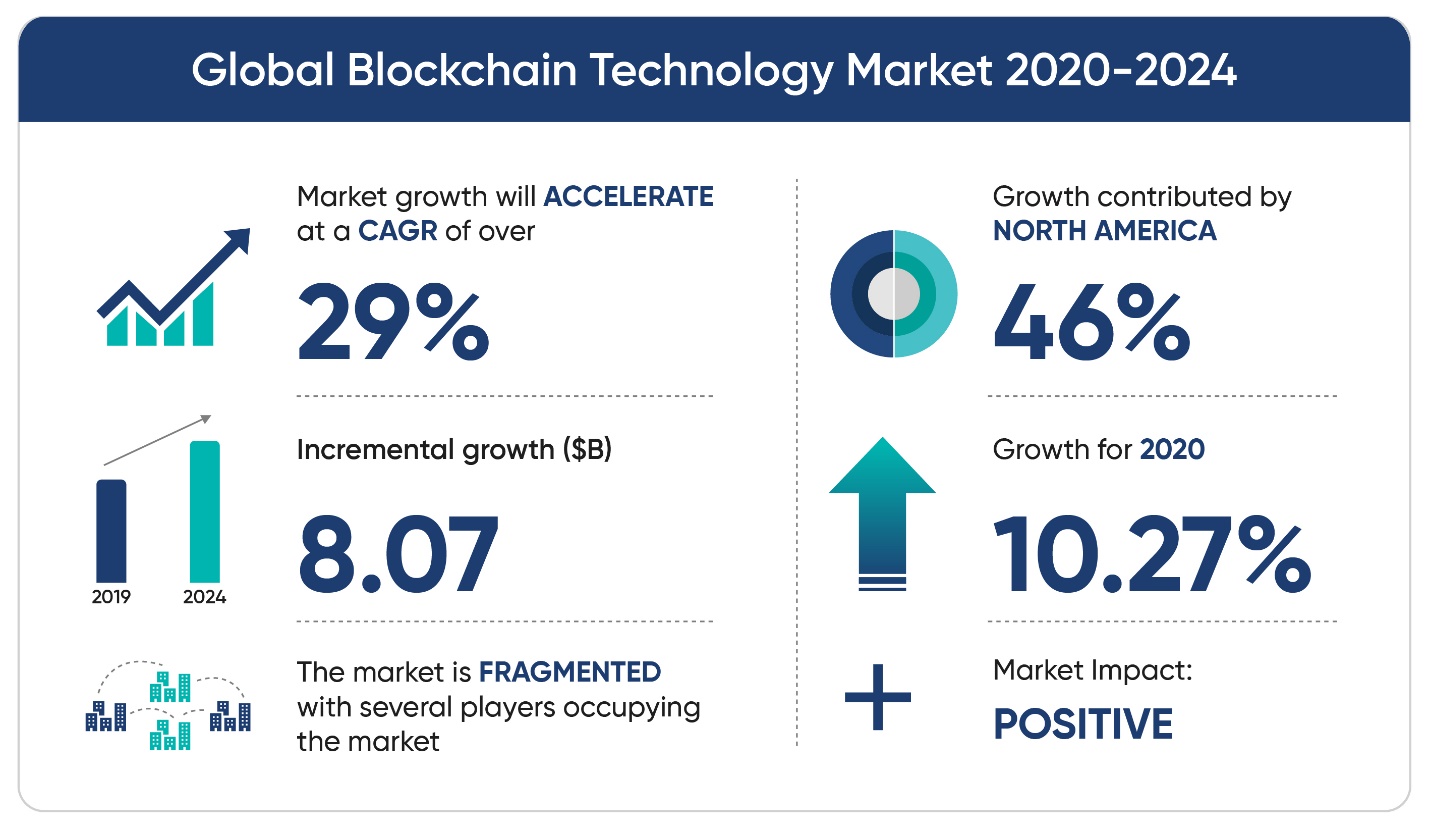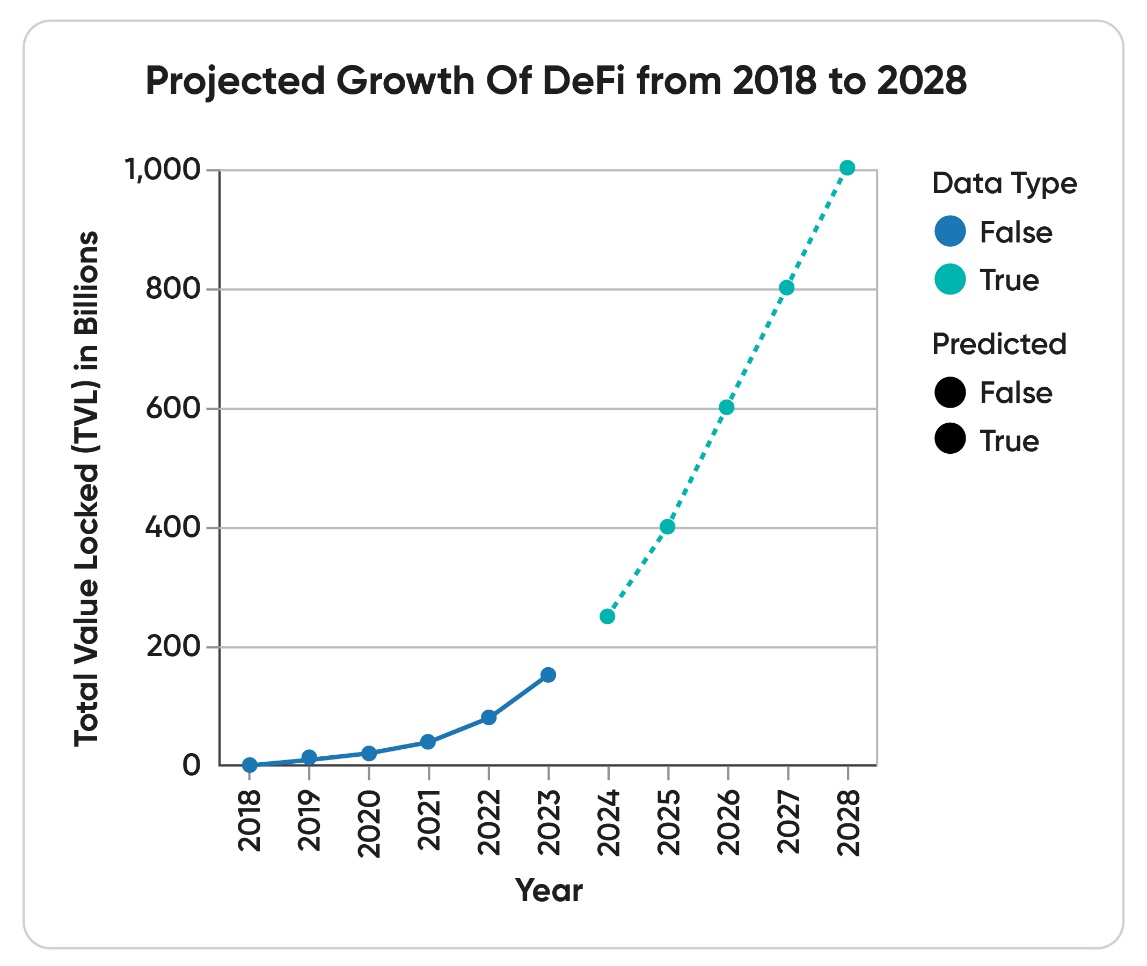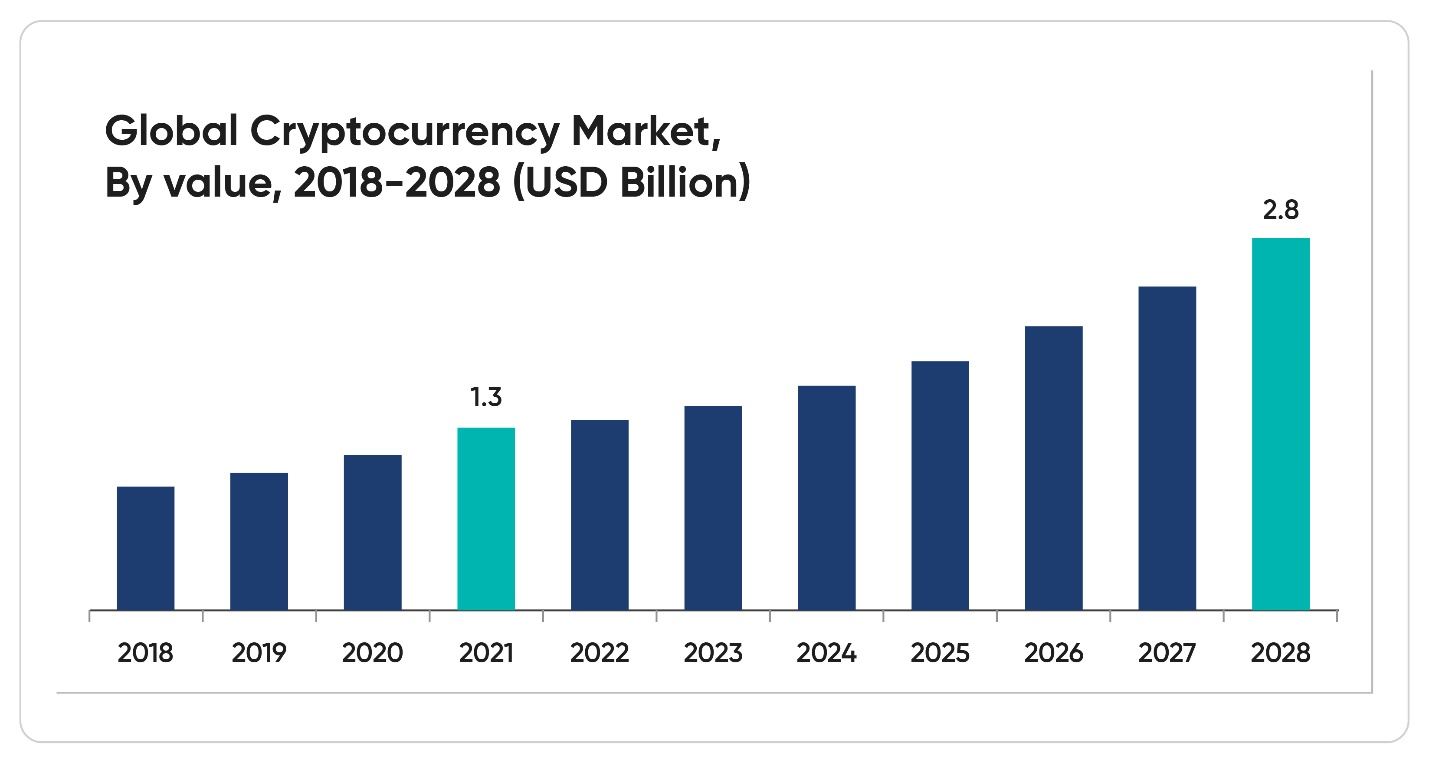In recent years, the world of finance has undergone a remarkable transformation with the emergence of cryptocurrencies and the required technology to power the systems incorporated with them. Once viewed with skepticism, these digital assets have now become integral components of the global financial landscape, attracting investors, technologists, and innovators alike. In this comprehensive guide, we will unravel the complexities surrounding cryptocurrencies, delve into the intricacies of blockchain technology, explore the future of digital finance, and provide detailed explanations of key concepts.
Whether you’re a seasoned investor or a curious newcomer, this deep dive will equip you with the knowledge and insights needed to navigate the exciting realm of digital assets.
Understanding Cryptocurrencies: Beyond Bitcoin Basics
The Rise of Cryptocurrencies
Cryptocurrencies, often referred to as digital or virtual currencies, are decentralized digital assets that use cryptography in order to secure data, create new units of currency, and more. The inception of Bitcoin in 2009 by an anonymous entity known as Satoshi Nakamoto marked the beginning of a new era in finance. Bitcoin is considered the first and is easily the most popular form of cryptocurrency. It operates on a decentralized network of computers, known as the blockchain, which ensures transparency, immutability, and security. Since the advent of Bitcoin, thousands of alternative coins, or altcoins, have come up, providing a variety of unique features, use cases, and underlying technologies. It has led to the popularity of cryptocurrency growth fund management services that take care of assets for you.
How Cryptocurrencies Operate
Cryptocurrencies operate on decentralized networks, typically based on blockchain technology. Blockchain is a distributed ledger that keeps a history of all the transactions, maintaining them across a number of systems. Each transaction is encrypted and added to a block, which is then linked to the previous block, creating a chain of blocks or a blockchain.
Example: Bitcoin Transactions
Imagine Alice wants to send one Bitcoin to Bob. When Alice initiates the transaction, it is broadcast to the Bitcoin network. Miners, who are nodes in the network, verify the transaction and add it to a new block. Once confirmed, the block is added to the existing blockchain, and the transaction is complete. Bob can now see the incoming Bitcoin in his wallet.
Investing in Cryptocurrencies
Investing in cryptocurrencies involves buying and holding digital assets with the expectation of generating a return. Investors can choose from a variety of cryptocurrencies, each with its unique features and potential for growth. Strategies range from long-term investing to short-term trading, depending on individual goals and risk tolerance.
Example: Long-Term Investment
John believes in the long-term potential of Ethereum and decides to purchase Ether, the native cryptocurrency of the Ethereum network. He buys Ether and holds it in his digital wallet with the expectation that its value will increase over time. John monitors market trends and technological developments to inform his investment decisions.
Buying Cryptocurrency
Acquiring cryptocurrencies involves several steps, from selecting a reputable exchange to securing a digital wallet for storage. Here’s a detailed explanation of how a person can acquire cryptocurrencies:
Choose a Cryptocurrency Exchange: The first step is to choose a cryptocurrency exchange where you can buy, sell, and trade digital assets. It’s essential to select a reputable exchange with a good track record of security and user experience. Notable options are Coinbase, Binance, Kraken, and Gemini.
Create an Account: Once you’ve chosen an exchange, you’ll need to create an account. This typically involves providing your email address, creating a password, and verifying your identity by submitting identification documents, such as a driver’s license or passport. Some exchanges may also require additional verification steps for enhanced security.
Deposit Funds: After creating an account, you’ll need to add funds to your account to purchase cryptocurrencies. You can use fiat currency deposits, as well as deposits in other cryptocurrencies. You can usually deposit funds via bank transfer, credit/debit card, or other payment methods supported by the exchange.
Select a Cryptocurrency: Once your account is funded, you can choose which cryptocurrency you want to buy. Bitcoin (BTC) and Ethereum (ETH) are two of the most popular cryptocurrencies, but there are thousands of others to choose from, known as altcoins. Research the different cryptocurrencies available and other aspects like use case, technology, and market potential before making a decision.
Place an Order: After selecting a cryptocurrency, you’ll need to place an order on the exchange. There are two main types of orders: market orders and limit orders. A market order will execute immediately at the current market price, while a limit order allows you to specify the buying price you want to buy the cryptocurrency. Once your order is placed, the exchange will match it with a corresponding seller.
Store Your Cryptocurrency: After purchasing cryptocurrency, it’s essential to store it securely in a digital wallet. A cryptocurrency wallet is a software program or hardware device that allows you to store, send, and receive digital assets. There are different types of wallets, including hot wallets (connected to the internet) and cold wallets (offline storage). Popular wallet options include hardware wallets like Ledger and Trezor, as well as software wallets like Coinbase Wallet and MetaMask.
Blockchain Technology: The Backbone of Cryptocurrencies
At the core of cryptocurrencies lies blockchain technology, a distributed ledger system that records all transactions across a network of computers. Unlike traditional centralized systems, blockchain operates on a decentralized network, offering transparency, immutability, and security. Each block in the chain contains a cryptographic hash of the previous block, creating a tamper-resistant system that prevents fraud and manipulation.
Blockchain technology has applications beyond cryptocurrencies, including supply chain management, voting systems, and digital identity verification. Blockchain and digital asset consulting have taken off in recent years as they provide a lot of confidence to investors.
How Blockchain Operates
Blockchain is a decentralized ledger that records transactions across multiple computers in a verifiable and permanent way. Each block contains a list of transactions, and once added to the chain, it cannot be altered. This ensures transparency, security, and immutability of data.
Let’s imagine a blockchain as a digital ledger that records transactions in a decentralized and secure manner, similar to a public spreadsheet that everyone can access and verify.
Imagine you’re part of a group of friends who want to keep track of how much money each person owes or is owed. Instead of using a traditional paper ledger, you decide to use a digital ledger called the “Friendcoin Blockchain.”
Transaction Creation: When one friend, let’s call her Alice, wants to send some Friendcoins to another friend, Bob, she initiates a transaction. Alice specifies the amount of Friendcoins she wants to send to Bob and provides his digital wallet address.
Transaction Verification: Before the transaction is added to the blockchain, it needs to be verified by the network. This verification process is carried out by a group of participants, known as miners, who use their computers to solve complex mathematical puzzles. Once a miner solves the puzzle, they add the transaction to a new block.
Block Addition: Once the transaction is verified, it is grouped with other verified transactions to form a block. Each block contains a list of transactions, a timestamp, and a reference to the previous block, creating a chain of blocks, hence the term “blockchain.”
Consensus Mechanism: Before a new block is added to the blockchain, the network must agree that the transactions within it are valid. This is achieved through a consensus mechanism, where the majority of participants in the network must reach a consensus that the transactions are legitimate.
Decentralization and Security: Because the blockchain is decentralized, meaning it is distributed across multiple computers or nodes, there is no single point of failure. This makes it extremely difficult for any one entity to manipulate or tamper with the data on the blockchain. Additionally, the cryptographic techniques used in blockchain ensure that once a transaction is recorded, it cannot be altered or deleted.
Transaction Confirmation: Once the new block is added to the blockchain, the transaction is considered confirmed. This means that it is now part of the permanent record and cannot be reversed. Bob can now see the Friendcoins in his digital wallet and can use them for future transactions.
This process repeats for every transaction on the blockchain, creating a transparent, secure, and immutable record of all transactions. Each participant in the network has a copy of the blockchain, ensuring that everyone has access to the same information and can verify the integrity of the data. Working with a blockchain asset investments consulting can make the process much easier.

Investing in Cryptocurrencies: Strategies and Considerations
As interest in cryptocurrencies continues to soar, investors are exploring various strategies to capitalize on this burgeoning asset class. From long-term investment in digital assets to short-term trading, there are numerous approaches to consider.
However, it’s essential to conduct thorough research, understand the inherent risks, and develop a well-defined investment strategy tailored to your financial goals and risk tolerance. Factors to consider when investing in cryptocurrencies include market trends, technological developments, regulatory landscape, and macroeconomic factors.
Altcoins vs. Major Cryptocurrencies: Assessing Investment Options
While Bitcoin remains the dominant player in the cryptocurrency market, altcoins offer investors a diverse range of investment opportunities. Ethereum (ETH), introduced in 2015, revolutionized the cryptocurrency space with its smart contract functionality, enabling developers to build decentralized applications (DApps) and launch new tokens. Ripple (XRP) focuses on facilitating cross-border payments and remittances, while Litecoin (LTC) aims to improve transaction speed and scalability. Understanding the fundamentals, technological advancements, and market dynamics of each altcoin is crucial for making informed investment decisions.
Decentralized Finance (DeFi): A Paradigm Shift in Finance
Decentralized Finance, or DeFi, represents a revolutionary movement aimed at disrupting traditional financial intermediaries and empowering individuals with greater financial sovereignty. Built on blockchain technology, DeFi platforms offer a wide range of financial services, including lending, borrowing, trading, and asset management, without the need for intermediaries such as banks or brokers. DeFi protocols utilize smart contracts to automate processes and enable peer-to-peer transactions, providing users with unprecedented control over their financial assets.
How DeFi Operates
Decentralized Finance, or DeFi, aims to recreate traditional financial services without central authorities. DeFi platforms are built on blockchain technology and utilize smart contracts to automate processes such as lending, borrowing, and trading. Participants interact with these platforms directly without the need for intermediaries like banks.
Example: Decentralized Lending
Let’s imagine a simplified example of how decentralized finance (DeFi) works using a lending scenario:
Imagine you have some spare money that you want to lend out to earn interest. Instead of going through a traditional bank, you decide to participate in a decentralized finance lending platform, let’s call it “DeFi Loans.”
Connecting to the Platform: You connect to the DeFi Loans platform using your digital wallet, which allows you to interact with the platform without the need for a middleman like a bank.
Deposit: You deposit your spare money, let’s say 100 Friendcoins, into the DeFi Loans platform. This money is now in a smart contract, a self-executing contract with the terms of the loan encoded within it.
Borrower Requests a Loan: Another user, let’s call them Alice, wants to borrow some Friendcoins. She submits a loan request on the DeFi Loans platform, specifying the amount she wants to borrow and the interest rate she’s willing to pay.
Loan Approval: The DeFi Loans platform automatically matches Alice’s loan request with available funds from lenders like you. If the terms of the loan meet the criteria set by the smart contract, the loan is approved, and the funds are transferred from the smart contract to Alice’s digital wallet.
Interest Accrual: Over time, Alice repays the loan plus interest according to the terms of the smart contract. The interest payments are automatically calculated and added to the smart contract, increasing the balance available for lending to other borrowers.
Withdrawal: When you want to withdraw your funds, you simply request a withdrawal from the DeFi Loans platform. The funds, including any interest earned, are transferred back to your digital wallet.
In this example, decentralized finance enables peer-to-peer lending without the need for traditional financial intermediaries like banks. The process is automated, transparent, and conducted entirely on the blockchain, ensuring security and immutability of transactions. Participants can earn interest on their assets by lending them out, while borrowers can access capital quickly and without the need for extensive paperwork or credit checks.

Navigating the DeFi Landscape: Opportunities and Challenges
While DeFi holds tremendous potential for transforming the financial industry, it also presents unique challenges and risks. Smart contract vulnerabilities, regulatory uncertainty, market volatility, and liquidity issues are among the key considerations for participants in the DeFi ecosystem. Engaging with experienced DeFi Finance consultants can provide valuable insights and guidance in maximizing opportunities while mitigating risks.
Additionally, staying informed about the latest developments, having consultancy for DeFi Finance investments, conducting thorough due diligence, and implementing robust security measures are essential for navigating the DeFi landscape successfully.
The Rise of Non-Fungible Tokens (NFTs): Unlocking Digital Creativity
In addition to DeFi, non-fungible tokens (NFTs) have emerged as a groundbreaking application of blockchain technology, enabling the tokenization and ownership of digital assets, including artwork, collectibles, and virtual real estate. NFTs are unique digital assets that cannot be replicated or replaced, making them ideal for representing ownership of digital content.
NFT investment platforms offer individuals the opportunity to participate in the burgeoning market for digital collectibles, with the potential for long-term growth and value appreciation. From digital art and music to virtual real estate and gaming assets, the possibilities with NFTs are virtually limitless.
Let’s imagine a simplified example of how non-fungible tokens (NFTs) work using digital art:
Imagine you’re an artist who creates a digital painting called “Sunset Serenity.” Instead of selling physical copies of your artwork, you decide to tokenize it as an NFT, making it unique and verifiable on the blockchain.
Tokenization: You create an NFT representing your digital painting “Sunset Serenity” on a platform specifically designed for minting and trading NFTs, such as OpenSea or Rarible. This process involves encoding the details of your artwork, such as its title, description, and digital file, into a unique token on the blockchain.
Ownership Transfer: Once your NFT is created, you put it up for sale on the platform. A collector, let’s call them Bob, sees your artwork and decides to purchase it. Bob buys the NFT using cryptocurrencies, such as Ethereum, and the ownership of the token is transferred from you to Bob on the blockchain.
Verification and Proof of Ownership: Because the NFT is recorded on the blockchain, anyone can verify its authenticity and ownership. Bob can view the details of the NFT, including its title, description, and digital file, on the platform where he purchased it. The blockchain serves as a tamper-proof ledger, providing indisputable proof of ownership for Bob.
Value Appreciation and Resale: Over time, the value of your digital painting “Sunset Serenity” may appreciate, especially if you gain recognition as an artist or if demand for NFTs increases. Bob can choose to hold onto the NFT as a digital collectible or sell it to another collector. Each time the NFT is sold, the transaction is recorded on the blockchain, ensuring transparency and traceability of ownership.
Digital Ownership and Interactivity: As the creator of the NFT, you can embed certain rights or privileges into the token. For example, you could grant the owner of the NFT exclusive access to future digital artwork, limited edition prints, or virtual events. This adds value to the NFT and enhances the overall experience for collectors.
In this example, NFTs enable digital artists to tokenize and monetize their work, providing a new avenue for creative expression and ownership in the digital age. NFTs are unique, indivisible, and verifiable assets that can represent a wide range of digital content, including artwork, music, videos, virtual real estate, and more. You can take advantage of NFT investment platforms for unique tokens.
Ethical Investing in the Digital Age: Social Responsibility and Sustainability
As interest in cryptocurrencies and digital assets continues to grow, so too does the importance of ethical investing. Hedge fund companies and investment firms are increasingly incorporating environmental, social, and governance (ESG) factors into their investment strategies, seeking to align financial returns with positive social impact.
Ethical investing hedge fund companies leverage innovative solutions and responsible investment practices to generate sustainable returns while promoting social and environmental stewardship. By prioritizing ethical considerations and sustainability principles, investors can contribute to positive societal change while achieving their financial objectives.
Risk Management in Crypto Investments: Mitigating Volatility and Uncertainty
While cryptocurrencies offer the potential for high returns, they also entail significant risks, including market volatility, regulatory uncertainty, and technological vulnerabilities. Effective risk management strategies, such as diversification, hedging, and proper due diligence, are essential for preserving capital and achieving long-term investment success. Additionally, staying informed about market trends, monitoring portfolio performance, and adjusting strategies accordingly can help investors navigate the dynamic landscape of digital assets successfully.
The Role of Technology in Investment Management: Leveraging Innovation for Success
Innovative technologies such as artificial intelligence (AI), machine learning, and blockchain are transforming the landscape of investment management. Hedge fund companies and investment firms are leveraging advanced analytics and data-driven insights to gain a competitive edge, optimize investment strategies, and enhance performance.
By embracing technological innovation, investors can adapt to evolving market conditions and capitalize on emerging opportunities in the digital asset space. From algorithmic trading and quantitative analysis to automated portfolio management, technology plays a pivotal role in driving efficiency, transparency, and innovation in investment management.
Embracing the Future of Finance
As we navigate the ever-changing landscape of digital finance, it’s clear that cryptocurrencies, blockchain technology, and decentralized finance are reshaping the way we think about money, investments, and financial services. From Bitcoin basics to advanced DeFi concepts, the world of digital assets offers a wealth of opportunities for investors, innovators, and visionaries alike. Dive into the latest trends and developments in cryptocurrencies, real-world assets, and various digital assets. Our dedicated specialists provide you with comprehensive insights, educational resources, and up-to-date information to ensure you stay well-informed. Join our community today and empower your understanding of this dynamic market to navigate it with confidence and knowledge.
Contact Kenson Investments today.
Disclaimer: The information provided on this page is for educational and informational purposes only and should not be construed as financial advice. Crypto currency assets involve inherent risks, and past performance is not indicative of future results. Always conduct thorough research and consult with a qualified financial advisor before making investment decisions.
“The crypto currency and digital asset space is an emerging asset class that has not yet been regulated by the SEC and US Federal Government. None of the information provided by Kenson LLC should be considered as financial investment advice. Please consult your Registered Financial Advisor for guidance. Kenson LLC does not offer any products regulated by the SEC including, equities, registered securities, ETFs, stocks, bonds, or equivalents”

















